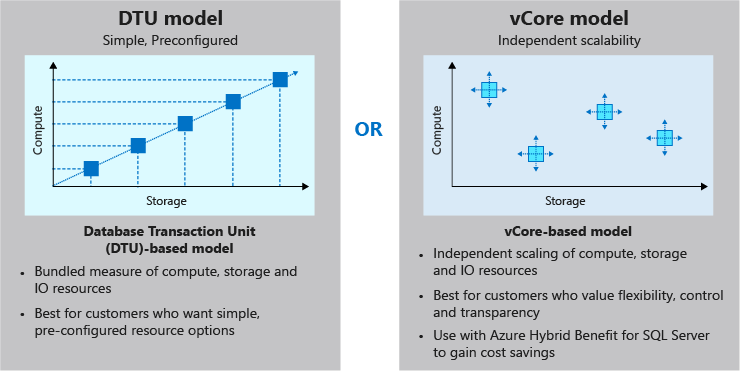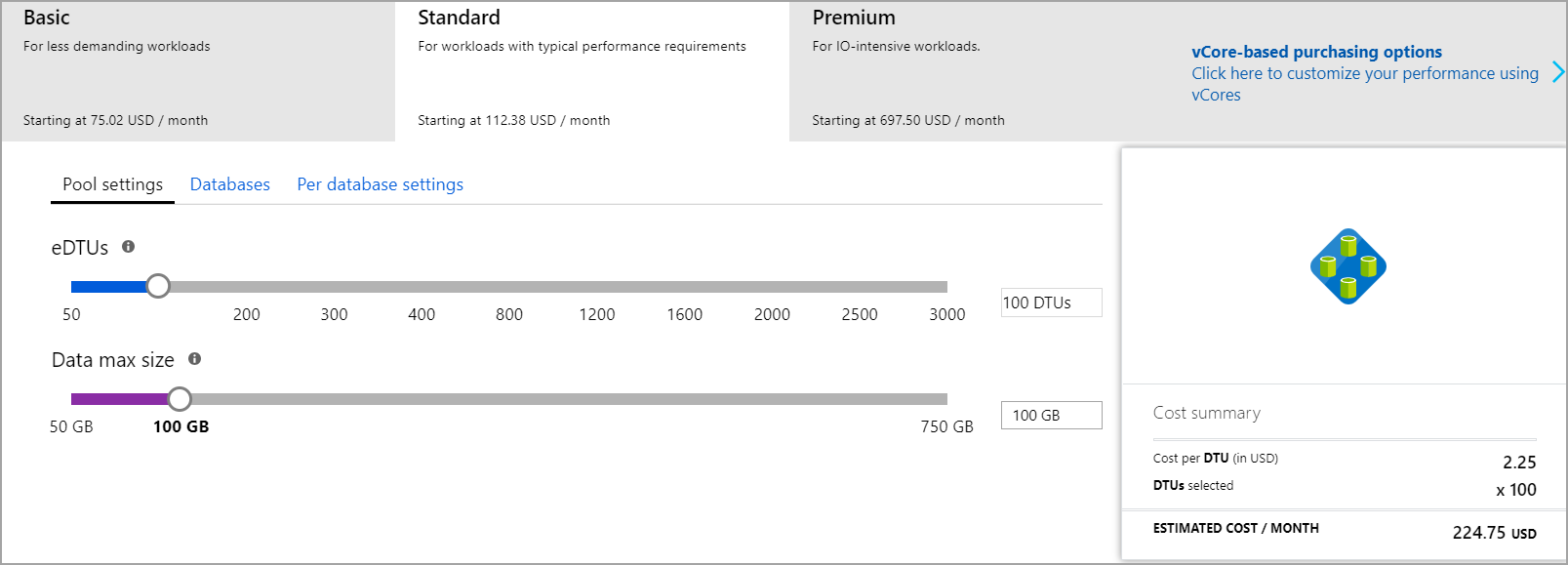Manage SQL elastic pools performance and cost
SQL elastic pools can help reduce server costs. To make effective use of elastic pools, you must configure their capacity correctly. To configure an elastic pool, we need to understand how SQL server performance is measured and priced by using either a DTU-based or vCore-based purchasing model.
DTU-based pricing model
A database transaction unit (DTU) is a unit of measurement for the performance of a service tier in Azure, and is based on a bundled measure of compute, storage, and IO resources. Compute sizes are expressed in terms of DTUs for single databases or elastic database transaction units (eDTUs) for elastic pools.
If demand exceeds the available resources for your tier for any resource (CPU, storage, or IO), the performance of your database is throttled. This model is the simplest and is available in three tiers: basic, standard, and premium.
vCore-based pricing model
A virtual core (vCore) represents the logical CPU offered with an option to choose between generations of hardware and physical characteristics of hardware (for example, number of cores, memory, and storage size).
The vCore-based purchasing model gives you flexibility and control over individual resource consumption, and a straightforward way to translate on-premises workload requirements to the cloud. This model allows you to choose compute, memory, and storage based upon their workload needs within the general purpose or business critical service tier.
The following chart provides a comparison of the two pricing models:

Review cost estimates
The Azure portal displays the results of your pool settings as an estimated monthly bill. The following charts display the DTU-based pricing and vCore-based pricing models:

